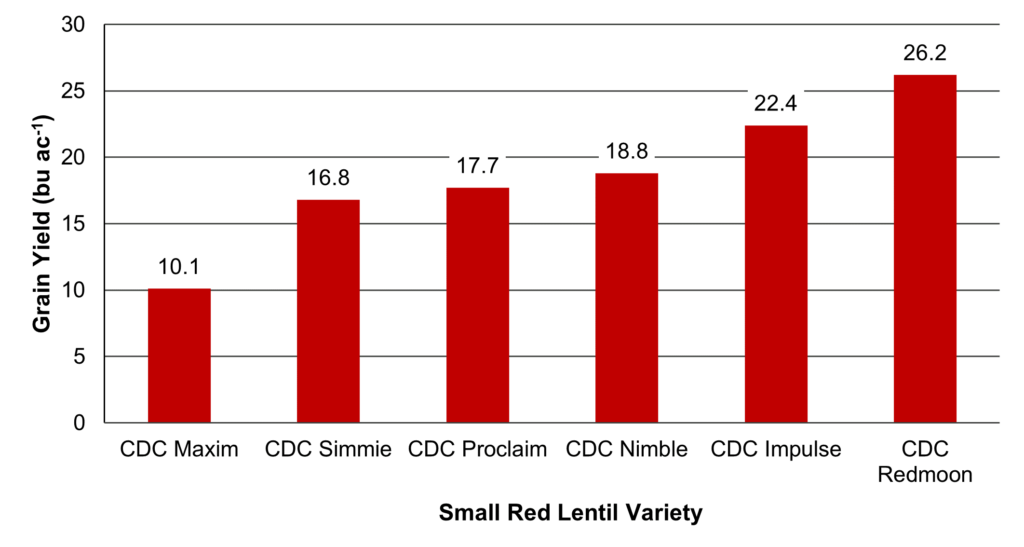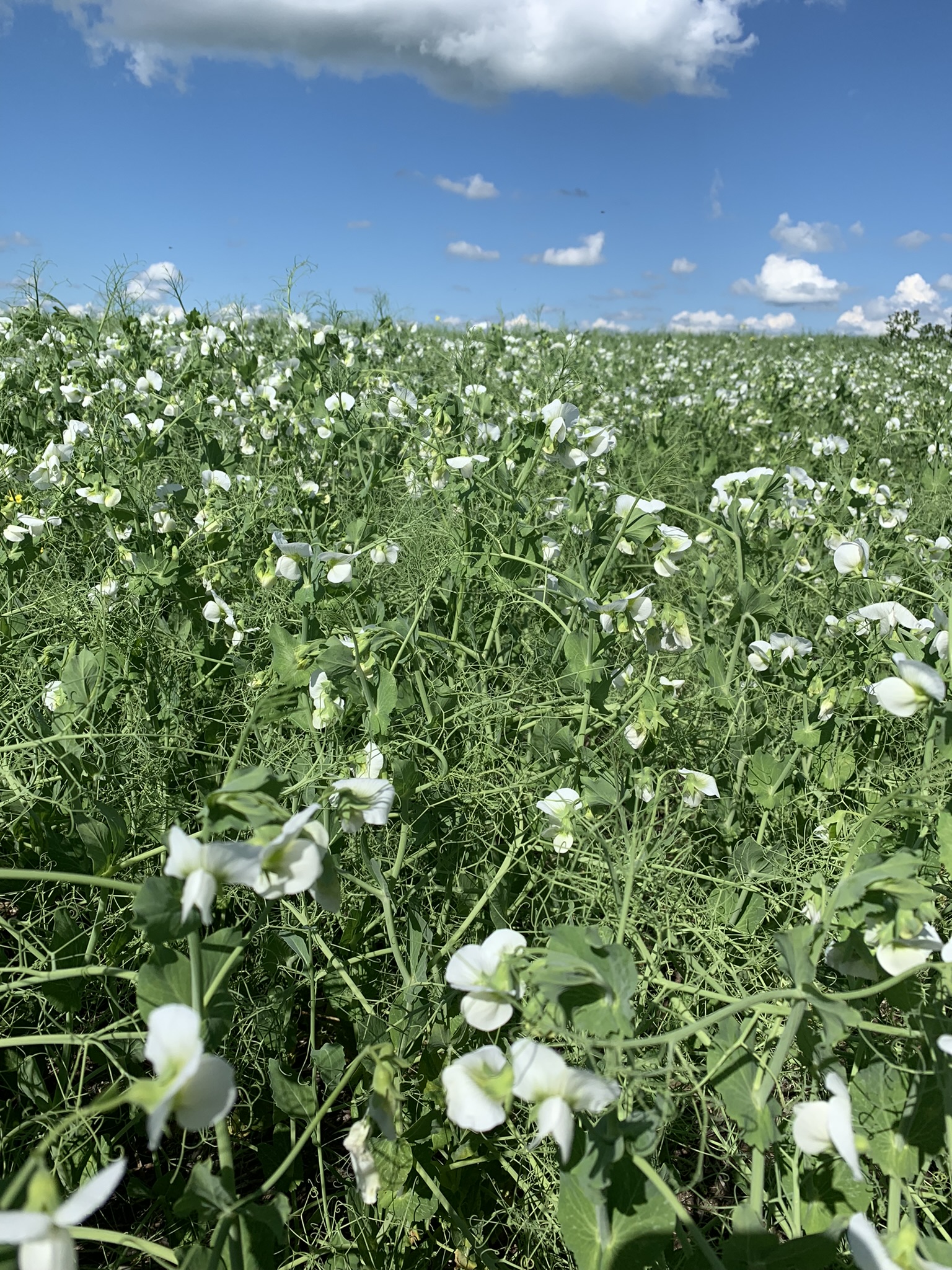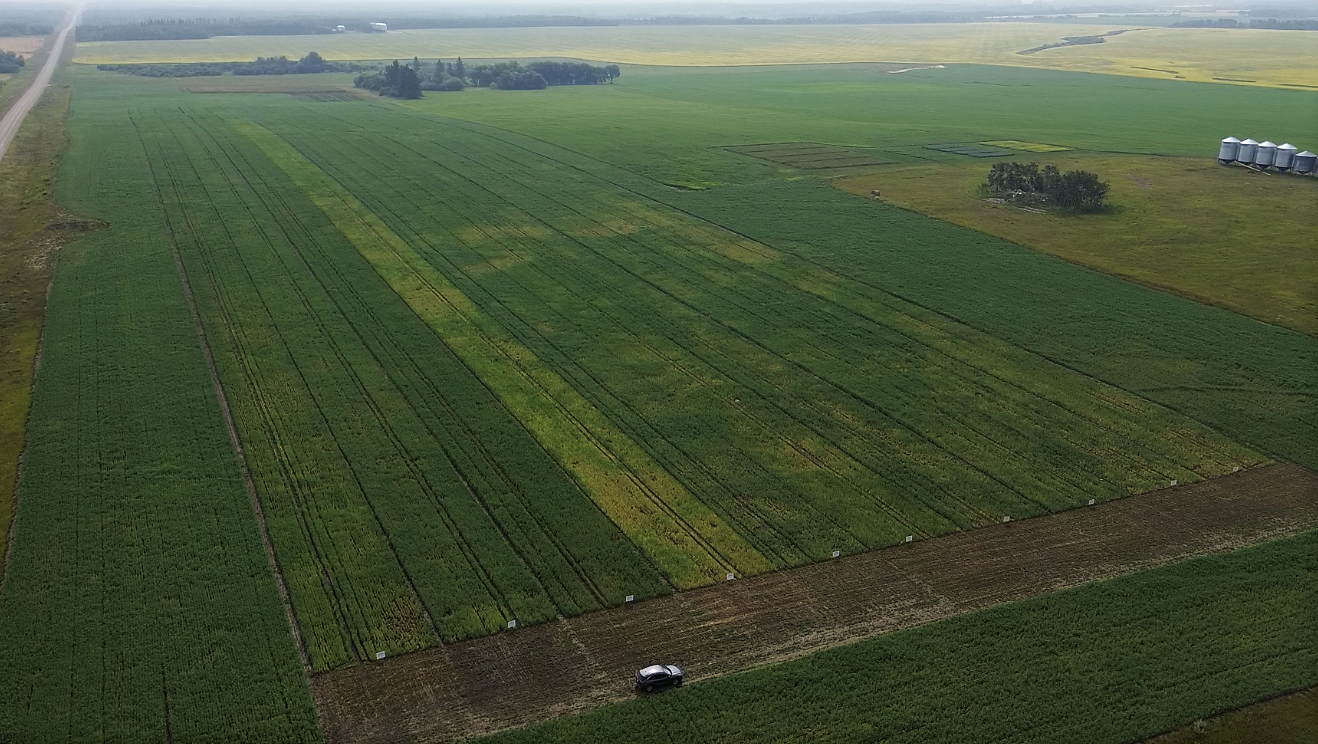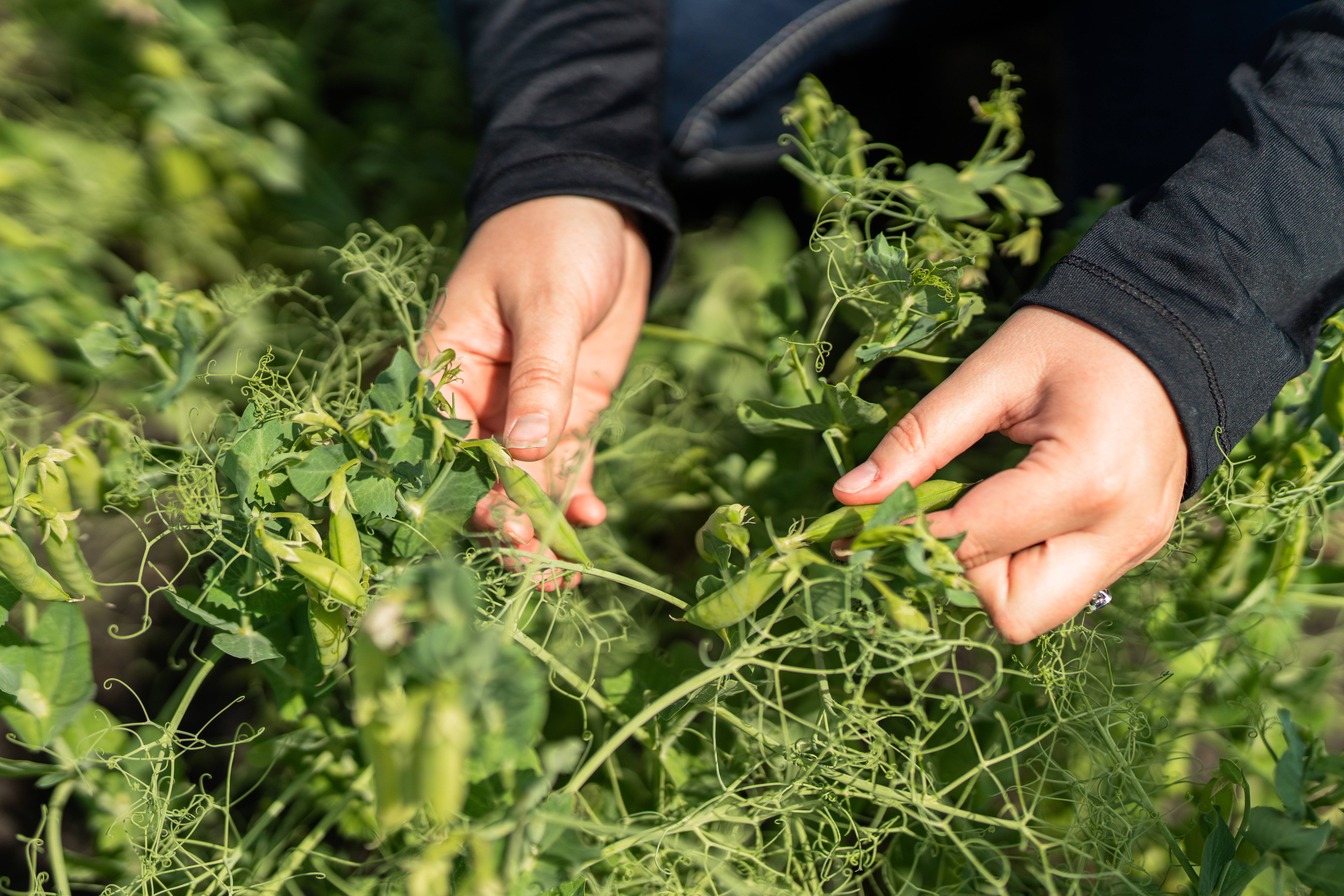Variety selection can have a significant impact on the overall profitability of pulse crops and is an important agronomic consideration for any grower. With several varieties to choose from, selecting the variety most appropriate for a specific operation is not always a straightforward decision. Before pulse varieties become commercially available, they undergo a rigorous testing process to ensure genetics hitting the field have the appropriate agronomic and market-acceptance qualifications.
Once commercially available, testing does not stop. Varieties continue to be enrolled in pulse Regional Variety Trials (RVTs) where they are compared against standard check varieties in small-plot settings using standardized protocols with results being statistically analyzed. RVT data are aggregated and published in the SaskSeed® Varieties of Grain Crops publication every year.
During the 2022 growing season, Saskatchewan Pulse Growers (SPG) launched the Pulse Variety Showcase to demonstrate crop performance differences of commercially available pea and lentil varieties under typical field-scale conditions and management practices. Pea and lentil acres are still dominated by older varieties which have lower yield potential, and the goal of the showcase was to provide an opportunity for growers to consider options of newer, higher-yielding pea and lentil varieties.
Showcase Sites
Three Pulse Variety Showcase sites were initiated during the 2022 growing season. These sites were established in diverse regions across the province including Avonlea, Birch Hills, and Welwyn, and demonstrated 3‒6 varieties of 1‒3 market classes per crop type. Top new varieties of small red lentil, yellow pea, and green pea were compared to leading established varieties including CDC Maxim, CDC Meadow, and CDC Limerick, respectively. Demonstrated crops and classes differed by site with both pea and lentil being established at Avonlea and Welwyn sites and only pea at the Birch Hills field location.
Unfortunately, the demonstration at the Welwyn site was not taken to yield due to excessive moisture and flooding early in the season. As this site was terminated in June, only environmental conditions and results pertaining to the the Avonlea and Birch Hills sites have been reported.
Scaled to the equipment of cooperating growers, varieties were seeded in strips in commercial farm fields and were managed in alignment with standard growing practices.
Variety selection was the only management variable across trial sites and all other fertility, inoculant, weed, disease, and other pest or harvest management operations were held constant and in accordance with good agronomic practices. Speed and depth of seeding were also consistent across variety demonstration. Seeding rate was determined from a standardized target plant stand and calculated based on pea and lentil seed lot thousand kernel weight (TKW) with percent survivability standardized across all varieties (Table 1).
Table 1. Summary of small red lentil, green pea, and yellow pea variety treatments and estimated seeding rate based on targeted plant populations and seed test criteria of supplied seed lots.
| Crop & Class | Variety | Targeted Plant Stand (plants ft-2) | Germination (%) | TKW (grams) | Targeted Seeding Rate (lbs ac-2) |
|---|---|---|---|---|---|
| Small red lentil | CDC Maxim | 12 | 97 | 34.80 | 41 |
| CDC Impulse | 96 | 49.80 | 67 | ||
| CDC Nimble | 99 | 38.88 | 50 | ||
| CDC Proclaim | 99 | 43.60 | 56 | ||
| CDC Redmoon1 | 98 | 37.32 | 49 | ||
| CDC Simmie | 98 | 39.48 | 52 | ||
| Green pea | CDC Limerick | 8 | 91 | 213.0 | 212 |
| CDC Spruce | 81 | 269.0 | 301 | ||
| CDC Forest | 82 | 232.0 | 256 | ||
| Yellow pea | CDC Meadow | 8 | 90 | 170.0 | 171 |
| AAC Chrome | 82 | 227.2 | 251 | ||
| CDC Inca | 88 | 248.0 | 255 | ||
| CDC Spectrum | 85 | 239.4 | 255 | ||
| CDC Lewochko | 88 | 252.0 | 259 | ||
| CDC Canary2 | 96 | 230.0 | 217 |
1CDC Redmoon is a conventional lentil variety and is not tolerant to imidazoline herbicide application.
2CDC Canary was only included as a standardized variety treatment at Birch Hills due to the region’s shorter grower season and the very early maturity rating of that variety.
The Avonlea and Birch Hills field sites represent distinct growing regions, soil types, and environmental conditions. Lentil and pea varieties at the Avonlea site were seeded on May 6 and harvested on August 12 for a growing season length of 98 days. Yellow and green pea at the Birch Hills location had a similar growing season length of 101 days despite later seeding (May 25) and harvest (September 3). In-season weather data collected during May through August indicated an unexpected pattern and indicated the Avonlea site was generally cooler and wetter relative to the Birch Hills site during the 2022 growing season (Figure 1).
Baseline soil properties from soil sample data are summarized in Table 2. The Avonlea site, located in the Dark Brown soil zone, was classified as a mixture of Orthic Dark Brown Chernozem and Dark Brown Solonetzic soils belonging to the Claybank association with loam as the dominant soil texture. The Birch Hills site, located in the Black soil zone, was classified as an Orthic Black Chernozem belonging to the Melfort-Blaine Lake association with a dominant soil texture of silty clay loam (SKSIS Working Group 2018).

Table 2. Summary of select baseline soil properties from laboratory analysis of soil samples collected as random composite cores from a depth of 0‒6 inches prior to planting.
| Site | pH | SOM (%) | CEC (meg 100 g-1) | NO3-N | P | K | S |
| (ppm) | |||||||
| Avonlea | 7.1 | 2.1 | 19.2 | 4 | 18 | 255 | 65 |
| Birch Hills | 6.5 | 5.4 | 16.7 | 15 | 22 | 206 | 41 |
Outcomes & Observations
Although no statistical conclusions can be drawn from these data due to lack of replication and only a single season of measurement, some initial performance patterns were observed. The only instance where the industry standard variety was not the lowest yielding was in yellow pea grown at the Birch Hills site where both CDC Lewochko and CDC Canary yielded lower (Figures 2‒4). At this site, the cooperator reported early spring flooding in the part of the field occupied by these two varieties which may have impacted yield.
Lentil
The yield advantage of growing a newer small red lentil variety compared to the industry standard (CDC Maxim) was considerable and consistent with every variety out-yielding CDC Maxim by 6.7 bushels per acre (bu ac-1) (CDC Simmie) to 16.1 bu ac-1 (CDC Redmoon). Despite significantly higher weed pressure, CDC Redmoon, a non-imidazoline tolerant variety, was undeniably the best performing small red lentil variety in the field demonstration at Avonlea. The cooperating grower also praised the next highest yielding variety, CDC Impulse, for its standability and large seed size. It was noted that CDC Simmie, CDC Nimble, and CDC Proclaim stood shorter and had less aboveground biomass relative to other varieties.

The yield data from the small red lentil showcase closely aligned with the long-term data analysis of Regional Variety Trial (RVT) data. Statistical analysis of up to 13 years of yield data ranked CDC Redmoon at the top followed by CDC Impulse, CDC Nimble, CDC Proclaim, CDC Simmie, and CDC Maxim in descending order.
Pea
At the Avonlea site, CDC Meadow was at a 2.9 bu ac-1 yield disadvantage to the next lowest-yielding yellow pea (CDC Inca) and gave up 11.9 bu ac-1 to the top yellow pea variety (CDC Spectrum). According to the cooperating grower at Avonlea, the high yield performance of CDC Spectrum was not surprising at this site as it visually appeared as the best variety with the best standability relative to other yellow pea varieties at this site. That said, visual appearance and aboveground biomass was not a reliable indicator of yield as AAC Chrome did not look as visually appealing compared to other yellow varieties and still managed to yield the second highest at both site locations.
Long-term analysis of yellow pea RVT yield data ranked AAC Chrome at the top overall followed by CDC Spectrum, CDC Inca, CDC Lewochko, CDC Canary, and CDC Meadow in descending order. Although the yield ranking in the demonstration trial does not closely align with statistical ranking of multi-year, multi-location RVT data, it still supports that AAC Chrome, CDC Spectrum, and CDC Inca are top-yielding varieties versus the older variety CDC Meadow. The ranking at Birch Hills is unusual due to the poor performance of CDC Lewochko, however this may be due to the flooding issues in early spring that impacted this variety along with CDC Canary.
Both sites of green pea followed the same yield pattern with CDC Forest as the highest-yielding variety followed by CDC Spruce. The yield advantage of a variety other than the industry standard (CDC Limerick) was 7.4‒10.1 bu ac-1 at Avonlea and 2.2‒4.6 bu ac-1 at Birch Hills. Observations from the cooperating grower at Avonlea indicated that CDC Spruce visually looked better and stood taller than the other green pea varieties all year and, therefore, was surprised that CDC Forest was the highest-yielding green pea variety at the site.


The comparative performance of the green pea varieties is aligned with statistical analysis of long-term RVT yield data. This ranked CDC Forest as the highest-yielding green pea followed by CDC Spruce and CDC Limerick in descending order.
Next Steps
SPG plans to repeat the Pulse Variety Showcase during the 2023 growing season at three field locations across the province. Combinations of small red lentil, yellow pea, and green pea will again be featured at selected sites with newer varieties being compared to the original reference varieties. As new pea and lentil varieties become commercially available, the treatment list is expected to evolve. Additional observations and grain quality data will also aim to be captured in future seasons to complement yield performance data. Continuing to evaluate varietal differences at the field-scale will help growers tailor their variety selection to their regional climatic zones and their specific farm management. Tours will also be held at each location to provide an opportunity for growers to visit the site, visually compare varietal performance, and discuss the merits of each variety.
Acknowledgments
The Pulse Variety Showcase would not have been possible with the involvement of grower cooperators. Saskatchewan Pulse Growers gratefully acknowledges the cooperation of Petruic Seed Company (Avonlea, SK), Tomtene Seed Farm (Birch Hills, SK), and Cornerstone Seed (Welwyn, SK). Appreciation is also extended to Howard Love for in-season seed coordination and site inspections.



